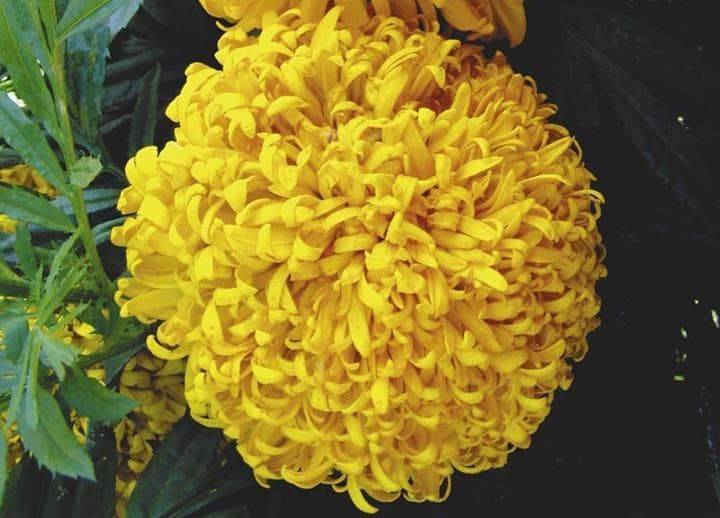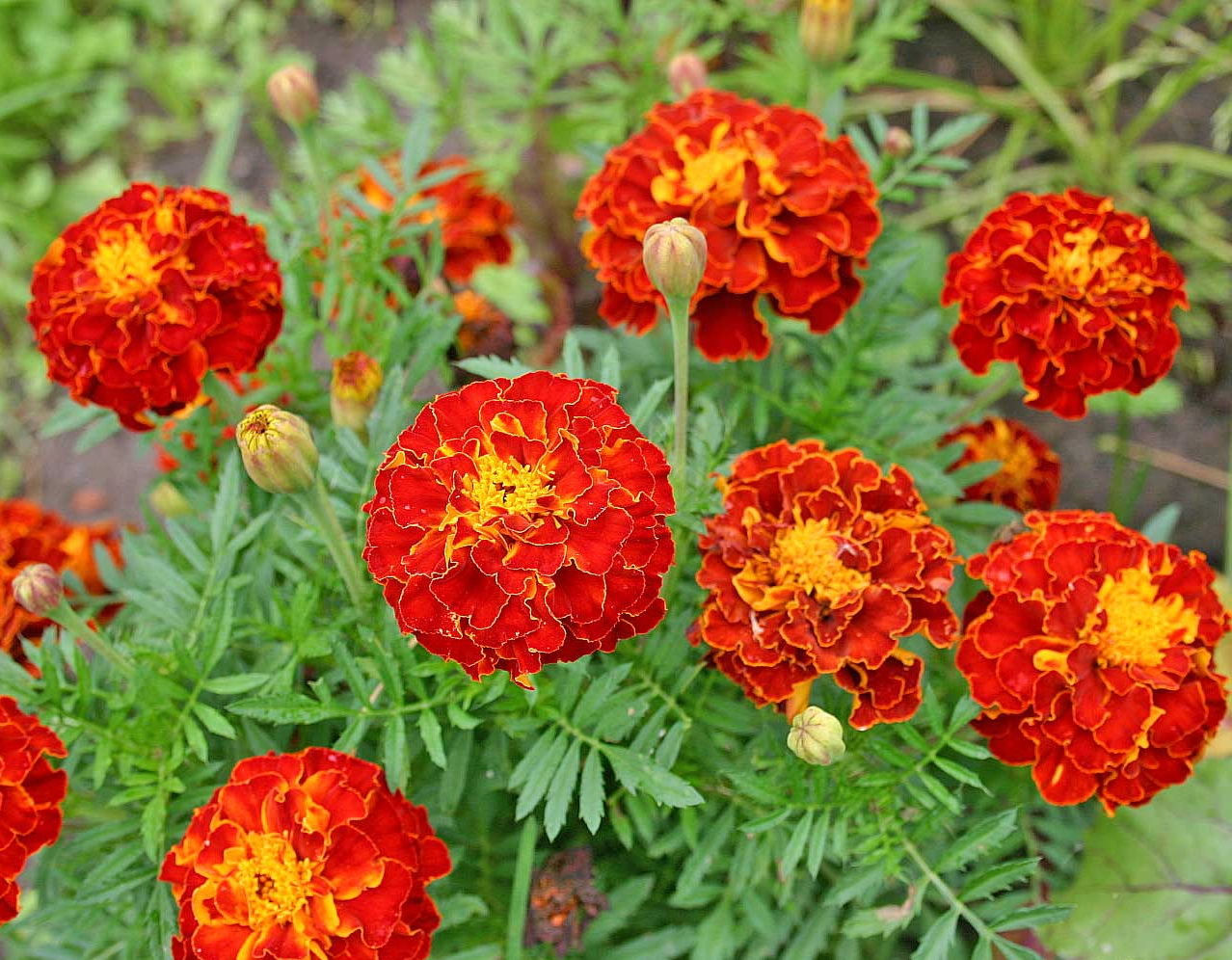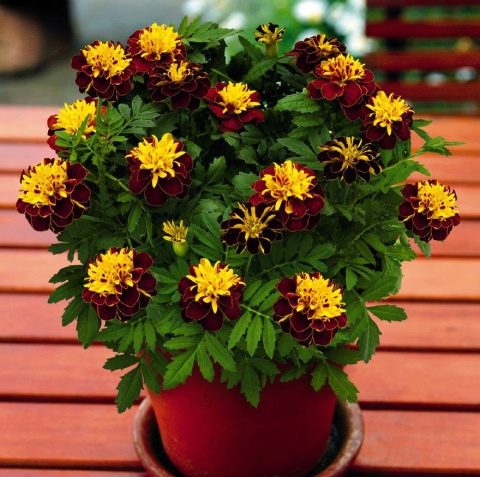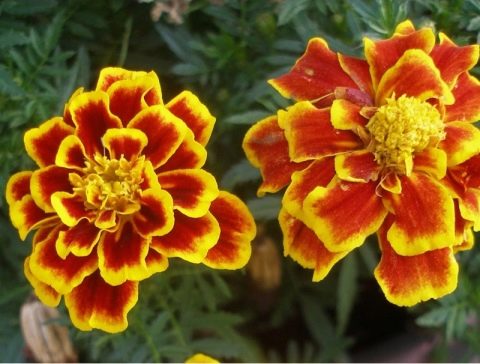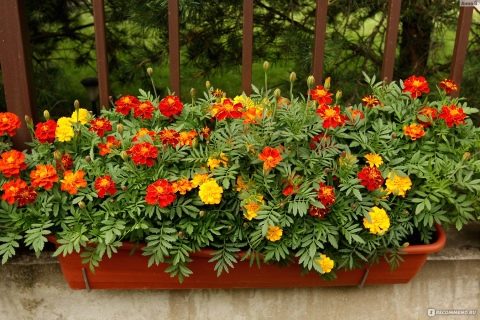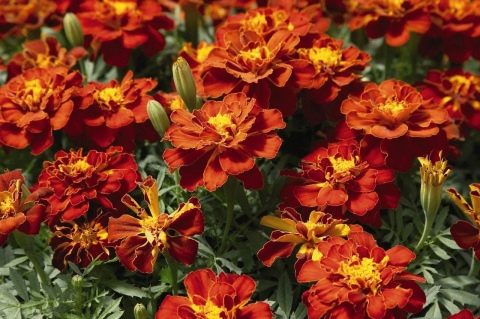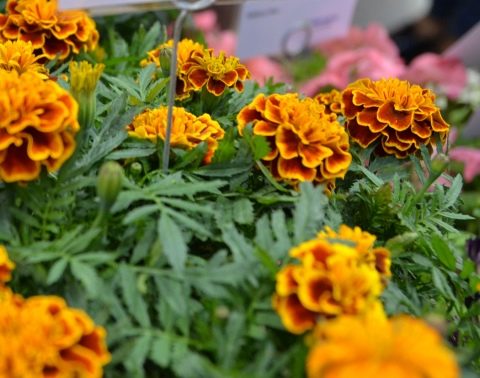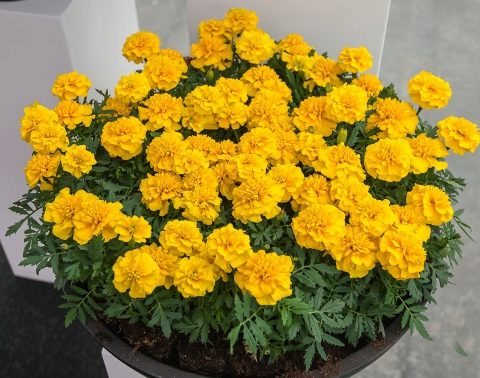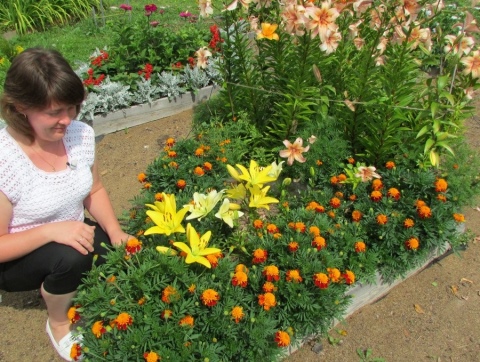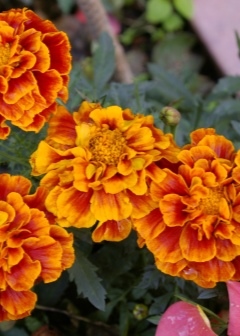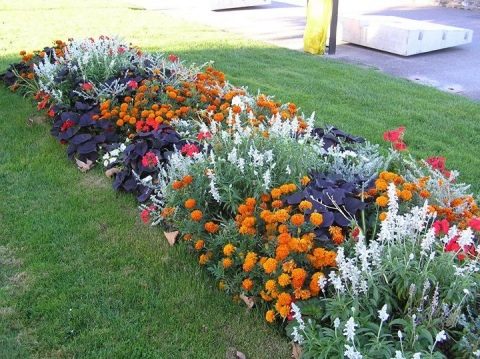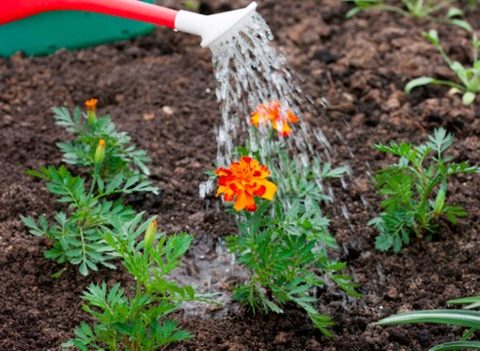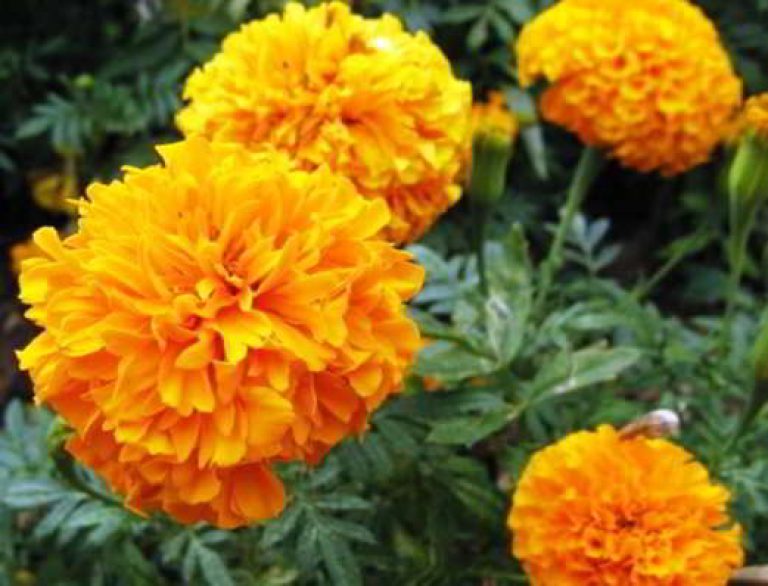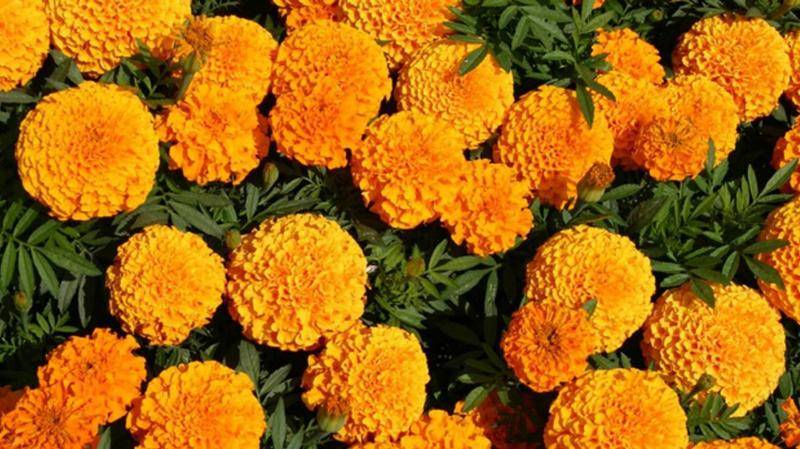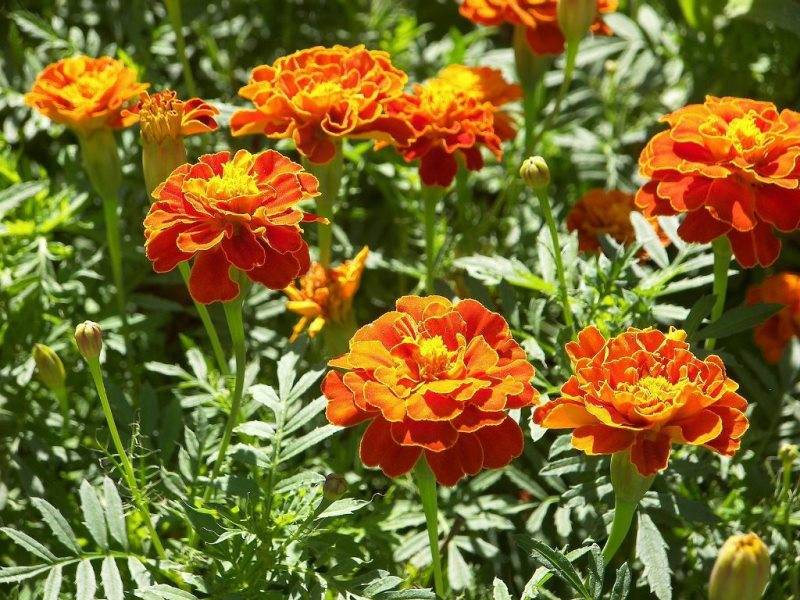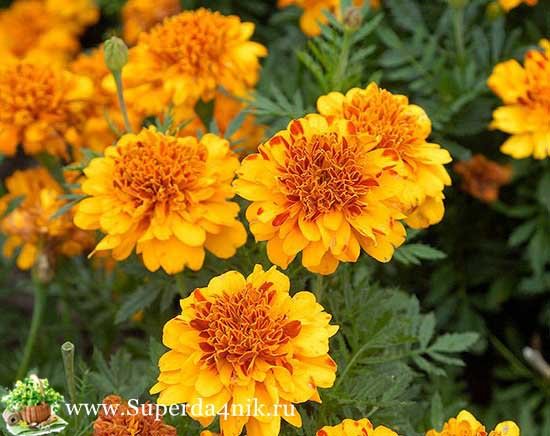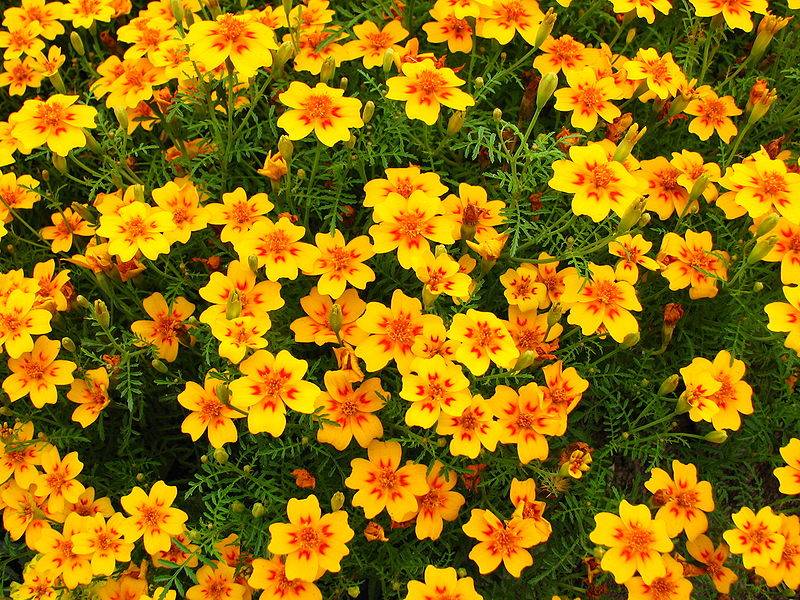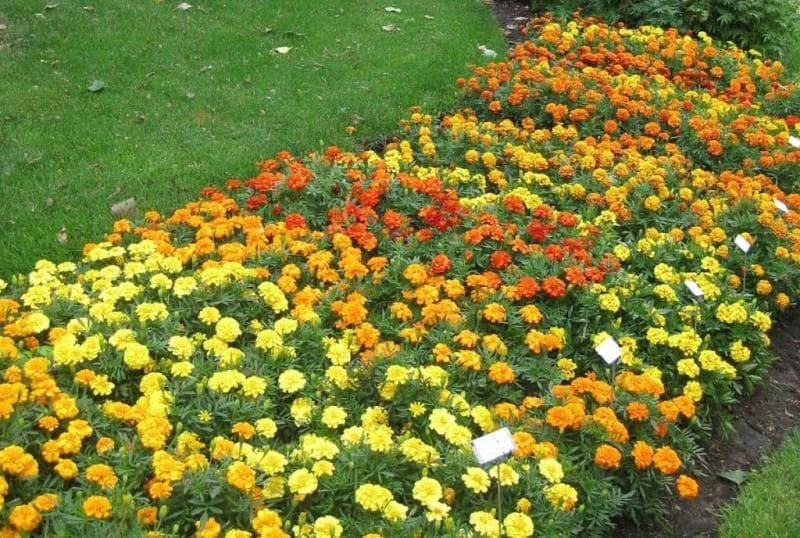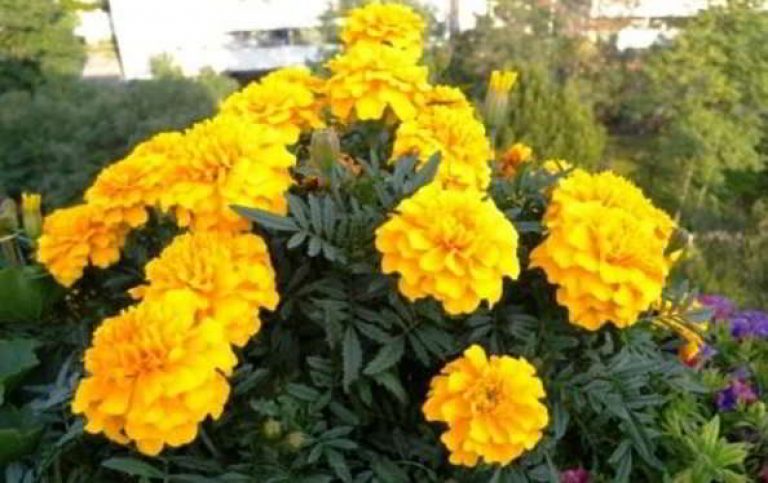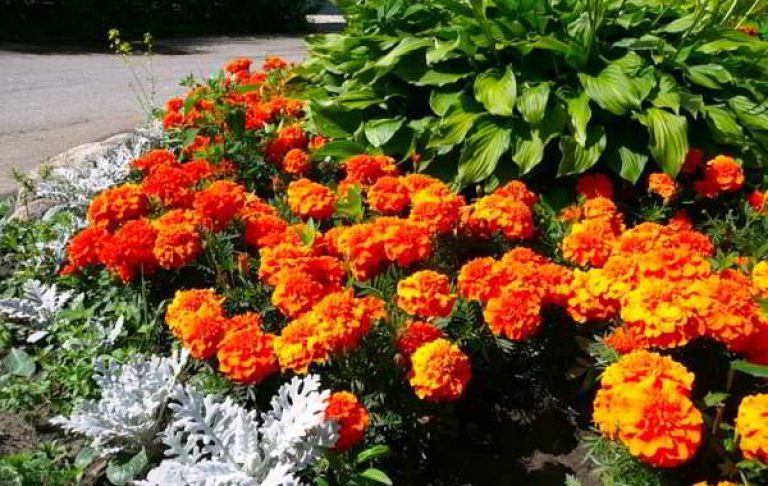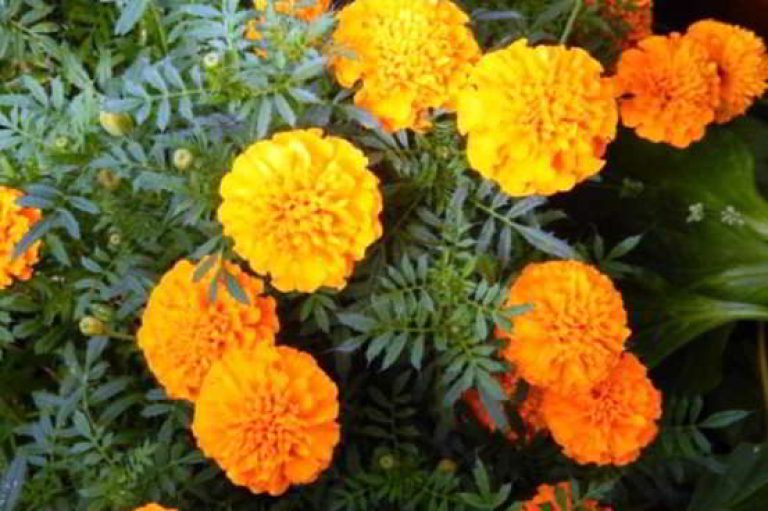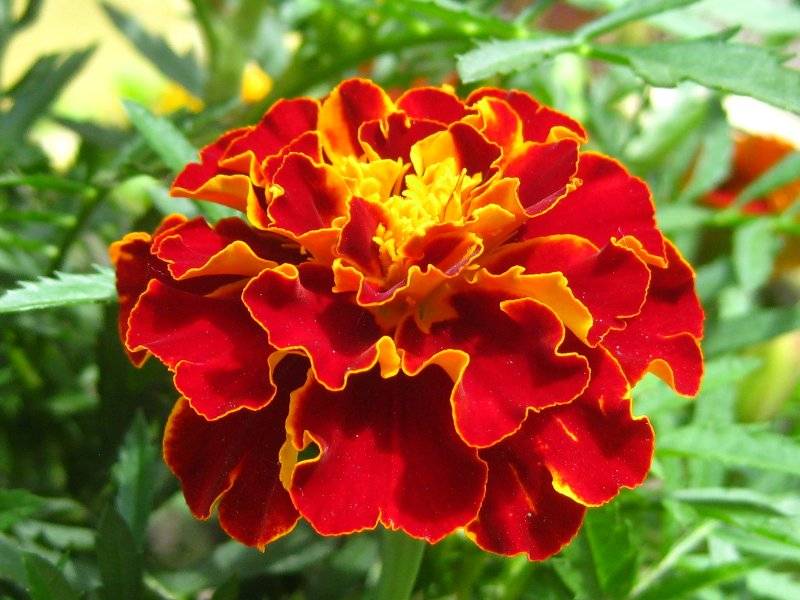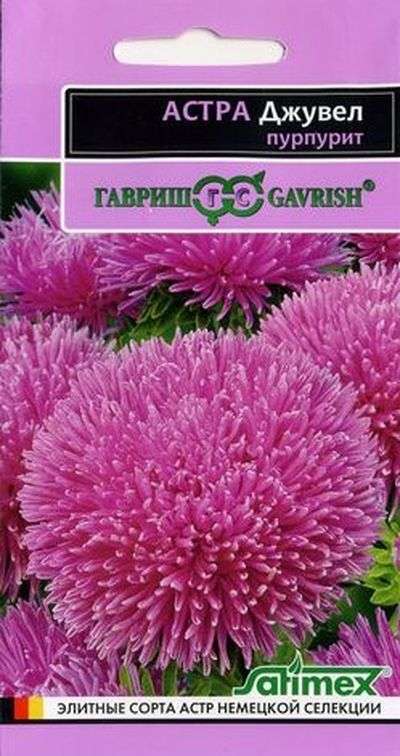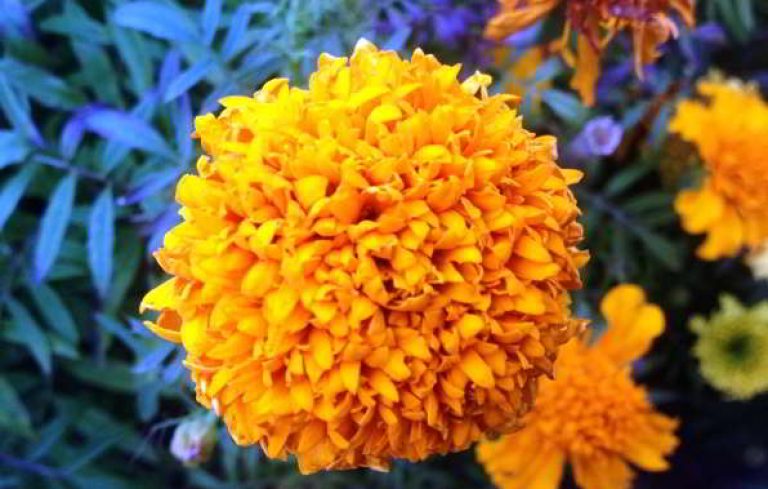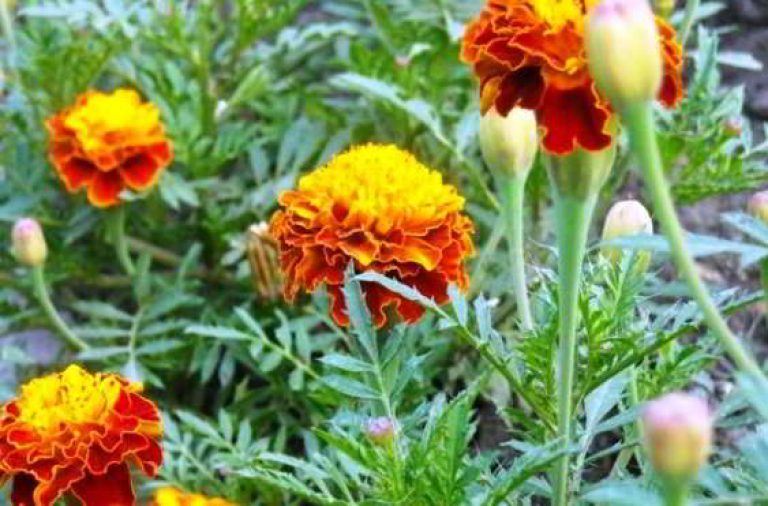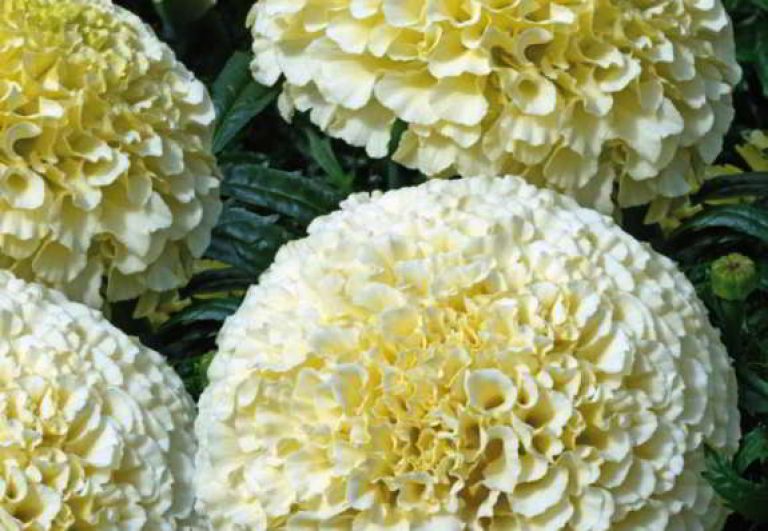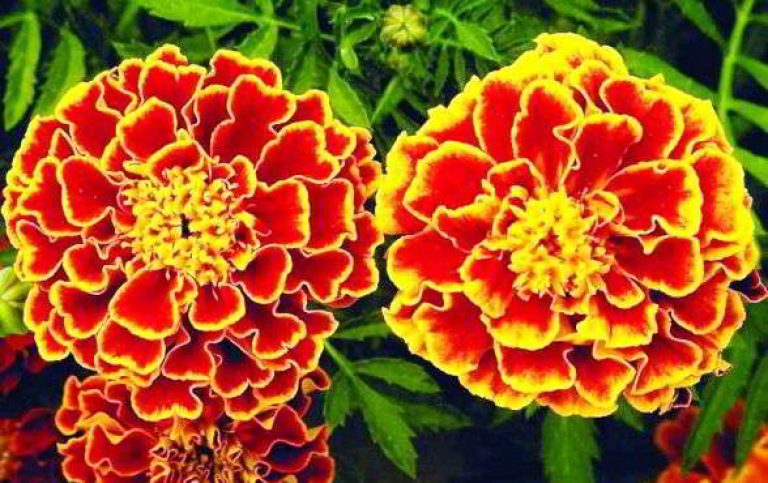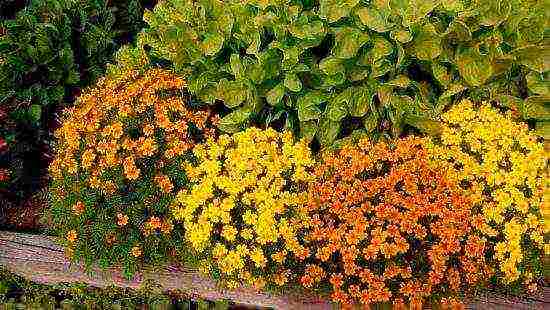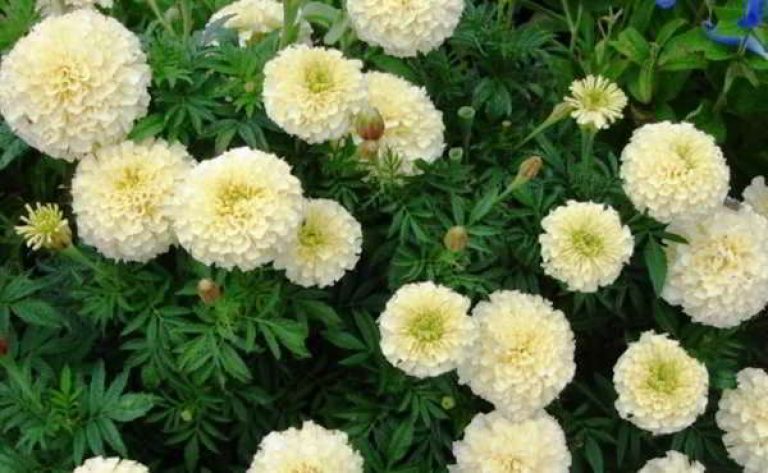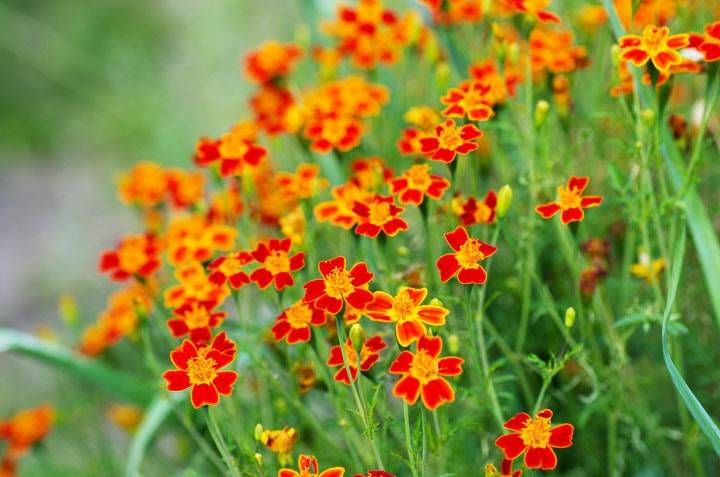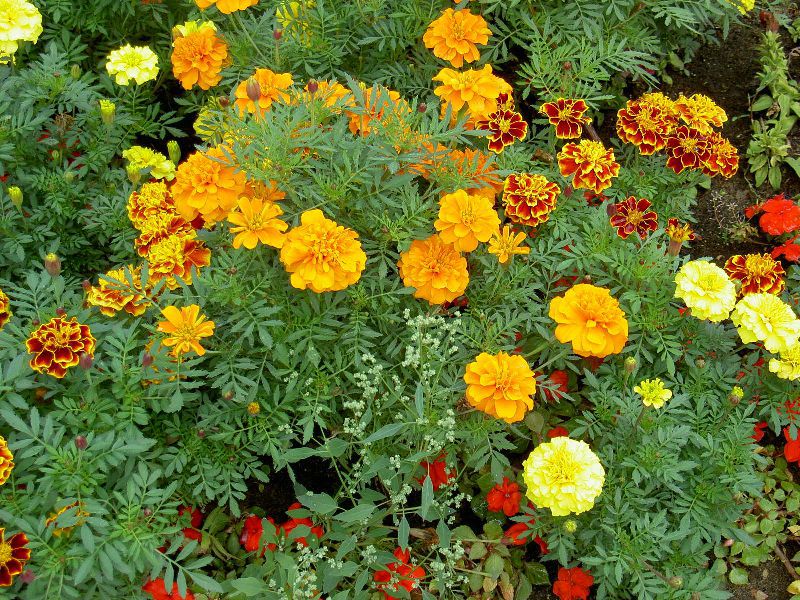Disease and pest control
As the experience of growing marigolds shows, their main advantage is immunity to most ailments and resistance to attacks of insect pests. This is due to the presence of phytoncides in plants, which scare off many insects. However, the peculiarities of weather conditions or other nuances can provoke the development of putrefactive processes not only at the roots, but also at the inflorescences of the culture. To normalize the condition of the plants, the level of soil moisture in the flower bed should be adjusted, and if necessary, the crops should be transplanted.
As for prolonged drought, spider mites may appear on the flowers. To combat the pest, first of all, it is necessary to increase the humidity, for this it is recommended to spray the flowers several times a day, especially in summer. As another effective method of pest control, gardeners use spraying with onion infusion, as well as with a decoction of yarrow or hot red pepper. Slugs and snails can also attack crops. Their presence can be detected by the shiny marks on the leaves.
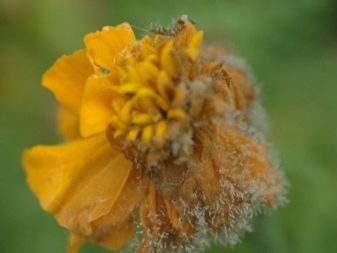
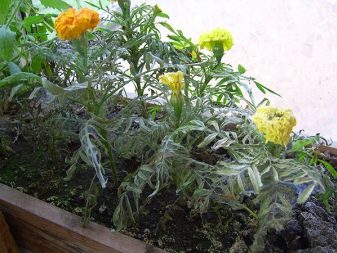
Marigolds can be affected by blackleg, especially young crops. A sign of the disease is the appearance of a whitish coating on the stem, which subsequently darkens, and the affected part begins to rot. Such a disease cannot be treated, so infected crops will need to be dug up and burned. The soil after the plants is subject to disinfection. As a preventive measure to reduce the risk of plant damage from a similar disease, the seed is treated with fungicides before planting along with the soil in which it is planned to grow flowering crops.
Adult marigolds can suffer from root rot. Yellow leaves, as well as slow growth of annuals, will become manifestations of the disease. Such cultures cannot be treated, they are also removed. In this situation, proper care of the flower bed will be a preventive measure. It boils down to the rooting of flowers in loose soil, regular moistening, excluding an excess of moisture in the soil, as well as the introduction of organic matter as a top dressing.
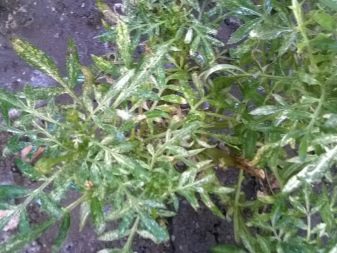
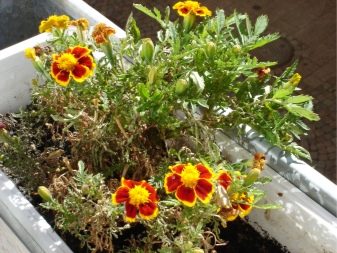
Bright rejected marigolds with a solid color
Although the variegation of the inflorescences favorably distinguishes the black shaves in the common flower bed, the bushes with monochromatic buds are no less beautiful. Moreover, the richness and depth of color of some varieties makes them the main decoration of the flower bed. Take at least terry marigolds Lemons - their color is consistent with the name of the variety. Rich yellow, like ripe fruits of indoor lemons (judging by their size). The diameter of each flower is at least 6 mm, which is quite a lot for this species. The bushes themselves up to 30 cm high are distinguished by strongly branched strong stems.
But the Red Devil marigolds are the complete opposite of Lemons. One of the most unusual and spectacular varieties is striking not only in its color, but also in its disproportionate size. On undersized, but spreading, bushes from 15 to 20 cm in height, large inflorescences bloom with bloody spots. Their diameter is 9 cm, which is quite a lot even for medium-sized varieties. Terry petals are evenly colored in a rich red-scarlet color.
There are many more varieties of rejected marigolds. Each of them is beautiful in its own way, but one feature is characteristic of all black-shavens. Wherever you plant them, abundant flower hats will not only decorate the site, but also delight with long and fragrant flowering.
Varieties
Now let's talk about varieties of white marigolds, while there are not so many of them yet, but breeders do not sit idle and will certainly delight flower growers with their new successful finds.
Kilimanjaro F1
This is one of the most popular white marigold hybrids. The shoots of these flowers reach a height of 70 centimeters. Stems are erect, branched with openwork decorative foliage.
Terry inflorescences of a creamy white color reach up to 12 centimeters in diameter, the middle of the flower is, as it were, slightly darkened, which gives some sophistication to the whole plant.
The flowering of Kilimanjaro marigolds continues until the autumn frosts.
Beatles White Moon F1
The recently bred hybrid is only 45 centimeters tall. It is distinguished from other marigolds by its excellent resistance to external influences, primarily to bad weather and winds. Its inflorescences, 10 centimeters in diameter, have light greenery in the petals.
Popsicle F1
Low tags of 25 centimeters in height have cream-colored inflorescences of 6 centimeters. A distinctive feature of the hybrid is cultivation in rarefied penumbra. These marigolds belong to the group of terry species, their flowering lasts from July to October.
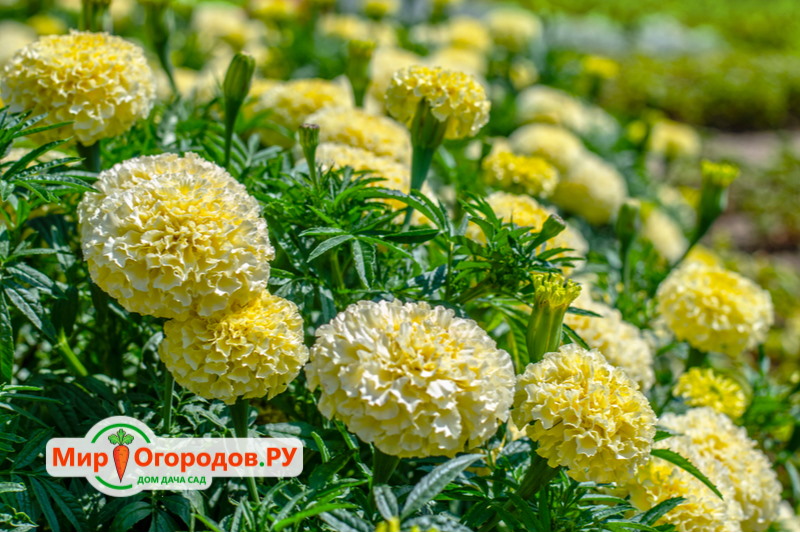
Popular varieties of rejected marigolds
Many varieties of French marigolds have been bred. All variety can be divided into three main groups:
- tall - 50-60 cm;
- medium height up to 50 cm;
- undersized - 25-30 cm;
- dwarf - 15-20 cm.
The most common varieties include:
-
"Eye of the Tiger" is a compact decorative variety with a tart aroma. Densely double inflorescences consist of orange tubular flowers and burgundy reed petals of the lower row. Used for all types of flower beds and garden boxes.
-
"Queen Sofia" - an annual up to 30-40 cm high, semi-double, two-colored inflorescences. The main color of the petals is red, along the edge there is a golden-orange border. In the sun, the color fades and changes to bronze. The flowers are large, 6-7 cm in diameter. The stem is thick, highly branched, the leaves are bright green.
-
"Gold head" or "Gold Kopchen" - undersized culture 20-25 cm, strong green shoots noticeable reddish bloom. Inflorescences are chrysanthemum, tubular flowers of golden yellow color. Dark red reed petals are arranged in one row below. They are slightly wavy, bent down. Early variety, blooms in early June.
-
"Carmen" - terry marigolds rejected, the height of the bush is up to 30 cm. The shoots are sprawling, green, ribbed. Leaves are pinnately dissected, green, with a serrated edge. The diameter of the inflorescences is up to 6 cm. The ligulate flowers are reddish-brown, arranged in two rows. The middle is made up of tubular yellow petals. Grown in containers, flowerpots, flower beds.
-
"Bonanza Bolero" is an annual 30 cm high and a flower diameter up to 7 cm. An unpretentious plant forms a compact bush. Has a peculiar spicy smell containing phytoncides. Inflorescences are large double with a spectacular color - on a gold base, red strokes. A versatile variety suitable for flower beds, beds, terraces or balconies.
-
"Playful Marietta" - thanks to its unusual bright color, the variety has won the love of gardeners. Plant height 40 cm, flowers are flat, not terry, consist only of reed petals. The color is two-tone - a yellow base and a red spot in the middle of the petal. Blooms profusely from July to September.
Marigolds and landscaping
Variegated, multi-colored black shaves will look good in any garden area. Their use in landscape design is quite wide:
- registration of paths, borders;
- decoration of gazebos or other yard buildings;
- creation of flower beds;
- single-species planting;
- mixborders;
- mobile single flowerpots.
From dwarf varieties of various colors, designers often create a bizarre geometric pattern. They are also often planted in garden beds to decorate vegetable crops.
Marigolds are combined with almost all garden flowers. Best of all, they coexist with such plants:
- asters;
- lobularia;
- tobacco;
- sage;
- echinacea;
- calendula;
- cineraria;
- alissum;
- zinnias.
It is important to choose the right color scheme that will emphasize the warm autumn character of the black shaves. For example, it is good to combine with blue or maroon tones.
Author's advice. The variety of varieties of velvet is very large, which allows you to satisfy the most sophisticated esthete.
Feel free to experiment by mixing different species. This will give your site an original personality.
The variety of varieties of velvet is very large, which allows you to satisfy the most sophisticated esthete. Feel free to experiment by mixing different species. This will give your site an original personality.
Care features
Plants are not picky about the composition of the soil, the main thing is to avoid clay soil. But even if there is heavy soil on the site, you can improve its structure and grow tagetis. It is enough to add sand and humus to the soil, then dig it up. The first 2-3 weeks after planting, marigolds need frequent watering. Drought during this period will cause the flowers to shrink. As the buds form, the moisture is reduced.
Leaving during the flowering season from June to October manifests itself in loosening the soil, weeding and watering as needed. Flowers are fed twice with phosphorus-potassium fertilizer.
Types of marigolds in the shape of inflorescences
In addition to the length of the stems, botanists have divided all species according to the type of flowers. So, this section includes six subgroups.
Simple
Velvet flowers of this section are distinguished by simple inflorescences consisting of several tubular flowers surrounded by one row of reed flowers. Here is some of them:
- Lemon Jam (Lemon Jam). A low-growing one-year-old hybrid with a height of no more than 0.2 m. Baskets are small - only 30-40 mm. The petals in the core are rich yellow, lemon on the edges.
- Paprika (Paprika). Bushes grow up to 0.2-0.3 m and form a kind of balls. Leaves are light shades, buds are small (20-30 mm). The middle is yellow-orange, the edges are fiery red.
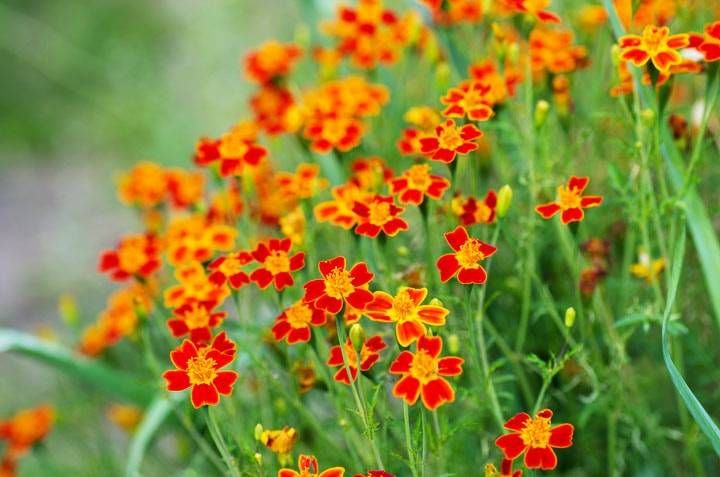 Paprika is a simple group
Paprika is a simple group
Semi-double
In contrast to the previous group, these chaliceps have two or three rows of reed flowers. The most famous varieties:
- Gold Ball (Golden Ball). It grows up to 0.5-0.6 m and blooms in small baskets 40-50 mm in size. The petals are yellow-golden at the core, maroon-brown along the edges.
- Red Brokade A low-growing hybrid-one-year-old with a height of no more than 0.2-0.3 m. Inflorescences about 50 mm in size, painted in a red-brown tint.
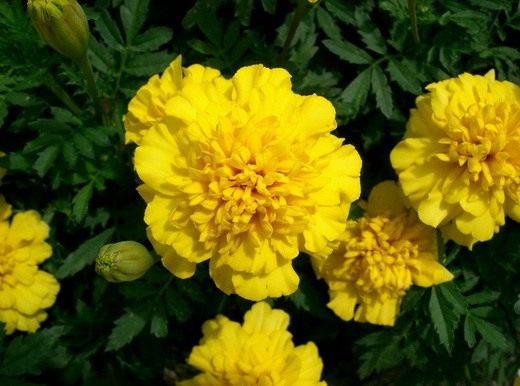 Gold Ball - semi-double variety
Gold Ball - semi-double variety
Terry
This section is characterized by varieties with lush, globular flowers that look like caps. Here are some examples:
- Popsicle (Eskimo). A hybrid with a height of about 0.4 m and medium-sized inflorescences (6-10 cm). The color is creamy white. Flowering begins in mid-summer.
- Fantastic. They form a tall bush (0.6-0.7 m) with terry baskets about 11 cm in size. The palette of colors is diverse - from golden yellow to fiery orange.
- Strawberry Blonde Annual velvet flowers no more than 0.2 m in height. Inflorescences of medium diameter (40-50 mm), differ in chameleon color.
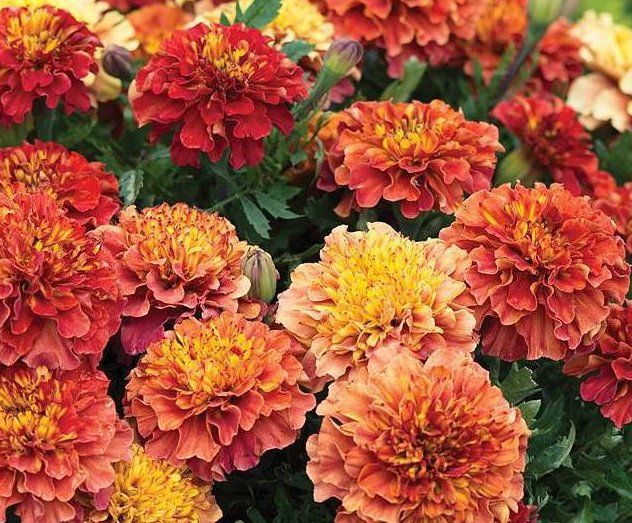 Terry grade Strawberry Blonde (Strawberry Blonde)
Terry grade Strawberry Blonde (Strawberry Blonde)
Anemone
The name of the group speaks for itself. The buds consist of several rows of reed flowers and large tubular flowers in the middle. The most famous varieties are:
- Durango (Durango). Low-growing annuals-hybrids 0.2-0.3 m high. Baskets 50-60 mm in size differ in a varied palette - from sunny yellow to burgundy brown.
- Orange Flame. It grows no more than 0.3 m and blooms in small buds with a diameter of 35-50 mm. Yellow-orange inflorescences are neatly framed with burgundy-brown petals.
Carnation
In appearance, these black-shaved ones resemble the flowers of the same name. Their buds are almost entirely reed-type petals. The most popular varieties:
- Carmen (Carmen). Low-growing annual plant 0.3 m high. Baskets are medium-sized (about 50 mm), deep yellow in the core, burgundy-red along the edges.
- Black Velvet Compact marigolds, which grow no more than 0.3 m. They bloom with buds 50-60 mm in size, the shade of ripe cherry. At the edges, the petals are framed with a bright orange border.
Chrysanthemum
These velvet flowers, on the other hand, are entirely composed of tubular flowers. The most famous of them:
- Taishan (Taishan). A low-growing early variety that blooms in late May. The buds are large, about 80 mm in diameter. The color can be from golden yellow to fiery orange.
- Vanilla F1 (Vanilla F1). An annual with a height of 0.4 m and a width of 0.2-0.3 m. Baskets are medium-sized (60-70 mm), cream in color with a light green tint.
Other types and varieties of marigolds
In addition to the two classifications discussed above, botany knows other types of black-shaved ones. We will talk about them below.
Erect, or African (Tagetes erecta)
One of the tallest representatives of the genus, whose height reaches 1-1.2 m. They are characterized by a more monochromatic color and double buds with a maximum diameter of 15 cm. The most characteristic varieties of this group are:
- Antigua (Antigua). A low-growing hybrid with very large inflorescences about 15 cm in size. The color of the petals is varied - from lemon to pumpkin.
- Crush Dwarf marigolds no more than 0.2 m in height and 60-70 mm in buds. Coloring yellow-orange, monochromatic.
- Lady Adult plants grow up to half a meter and bloom in small baskets 50-60 mm in diameter. The variety is distinguished by a variety of shades.
Erect marigolds Antigua (Antigua)
Rejected (Tagetes patula)
This section includes wide-spread varieties not higher than 0.4-0.6 m with buds about 80 mm in size. Inflorescences are double or simple. The peak of flowering occurs in the second half of the summer. Popular varieties are:
- Mercedes (Mercedes). Low-growing velvetki 0.3 m high, with terry baskets about 50 mm in size. The petals are burgundy brown, bright yellow in the middle.
- Fireball Bush growing no more than 0.2-0.3 m and inflorescences with a diameter of 40-50 mm. Differs in chameleon color, which varies from red-burgundy to yellow-orange.
Fireball is a rejected species
Narrow-leaved, or Mexican (Tagetes tenuifolia)
It is difficult to confuse this group of black-haired people with any other. Annual plants are distinguished by a simple structure of baskets and low growth (no more than half a meter). For narrow-leaved marigolds, a wide range of colors is characteristic. Let's consider some of them:
- Gnome The height of such marigolds is 0.2-0.3 m, but the inflorescences are quite large (about 80 mm). The color is monochromatic, intensely sunny.
- Lulu (Lulu). A low-growing variety (no more than 0.2 m) with miniature buds with a diameter of only 30 mm. It blooms with a beautiful lemon color.
- Carina (Karina). An adult plant rarely grows above 0.2 m. It blooms in small baskets about 30-40 mm in size, of a fiery orange hue.
Narrow-leaved, or Mexican variety of marigolds
Radiant (Tagetes lucida)
Radiant blackhams are also known under the name Spanish tarragon. When dried, it is used as a substitute for tarragon, and ground flowers are a natural dye. Perennial marigolds grow up to 0.4-0.8 m, forming bushes with erect shoots. The leaf plates are lanceolate, 6-8 cm in size. The buds, about 15 mm in diameter, consist of simple petals. The color is solid, yellow-golden. Flowering lasts from early June to late September.
Nelson's marigolds (Tagetes nelsonii)
Found in America (Texas) and Mexico. A tall plant with powerful stems 0.9-1.2 m long. Shoots are densely leafy, have a reddish tint. The leaf plates are narrow, with jagged edges, dark green. Baskets of medium size, simple structure, rich sunny yellow color. Blooming, black shaves emit a bright aroma with fruity and musky notes.
Nelson's velvet is often used in cooking, as a seasoning for fish, meat or baked goods.
Lemmon marigolds (Tagetes lemmonii)
Tall plants with a height of 1.2 m are most often found in the highlands of America and Mexico. The leaf plates are lanceolate, finely serrated, 5-15 cm long, dark green. The inflorescences have a simple structure, their size is about 50 mm. The petals are distinguished by a uniform color of a yellow-lemon shade. The aroma of blooming black-haired hairs has light mint notes.The smell is so bright that butterflies constantly gather over the Lemmon velvet bushes.
Small marigolds (Tagetes minuta)
Giant representatives of the genus, growing from half a meter to two. The leaves are narrow, with jagged edges, 5-20 cm in size. On the stem are densely opposite. Such velvet flowers bloom with small buds of a simple structure, 15-20 mm in diameter. Tagetes minuta is found in many regions of the world. Flowers grow in North and South America, Africa, eastern countries, Australia, southern Europe.
Small marigolds (Tagetes minuta)
Diseases and pests
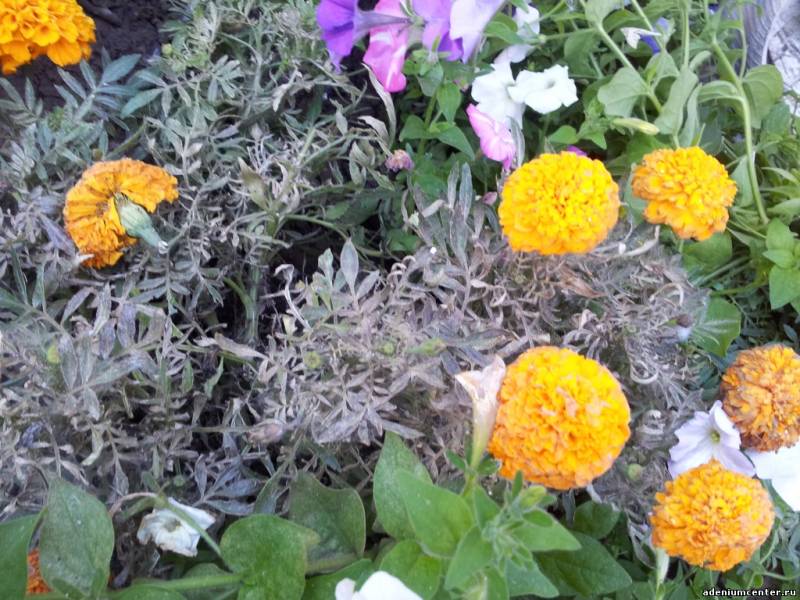 |
Gray rot
Ways to fight:
|
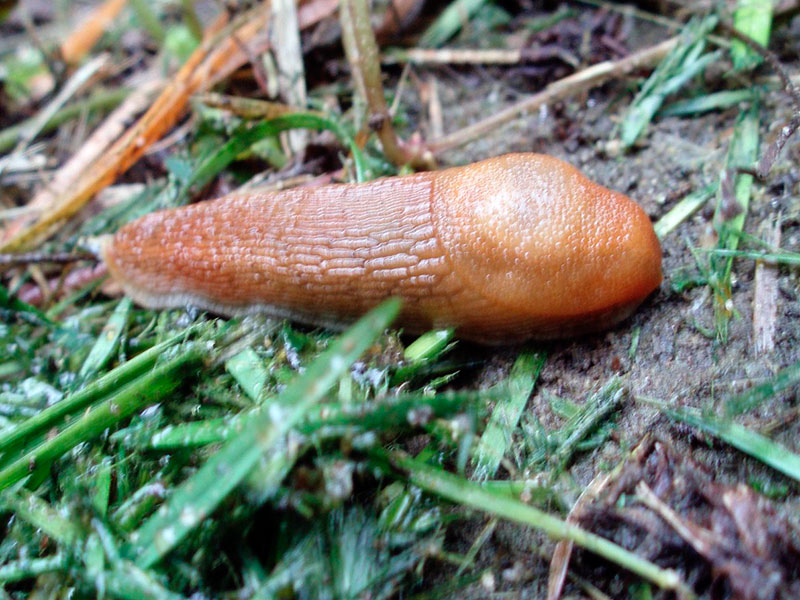 |
Slugs and snails
Ways to fight:
|
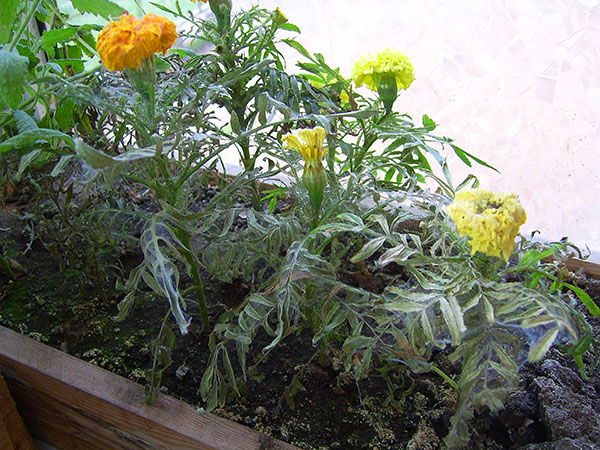 |
Spider mite
Ways to fight:
|
Of course, the best prevention of the appearance of signs of disease or infestation by insect pests is the proper care of the plant. However, sometimes negative factors still appear.
First of all, it is worth remembering that special attention should be paid to the soil if you are growing seeds for seedlings in a container. Do not neglect the required soil composition and do not change it
Otherwise, marigolds can become infected with the so-called black leg - a fungus that cannot be treated.
If you find the presence of pests (often these are slugs and snails), then first of all they must be collected and thrown away, and then a small amount of ash must be poured around each flower, which will become a kind of barrier for such pests.
To avoid infestation of marigolds with mites, you need to humidify the air around the plantings (for example, by spraying).
Planting and leaving
Cultivation of marigolds involves sowing seeds directly into open ground or for preliminary cultivation of seedlings indoors. On the flowerbed, work can be carried out already in May, as a rule, in a week and a half, the first shoots can be expected to appear. To protect young seedlings from frost, planting in open ground involves covering the flower bed with non-woven material.
Crops stand out for their good resistance to changes in outdoor conditions, however, they require compliance with certain requirements for care and placement.
Pick-up location
When growing marigolds in the open field, you should select areas with nutrient soil with neutral acidity. To make the land most suitable for growing flowers, you can add sand and peat to it, as well as mineral complex fertilizers. The place should be selected depending on the size of the planted variety. As a rule, miniature crops prefer to root in the center of flower beds or along paths. Also, small flowering bushes are more suitable for cultivation in pots.
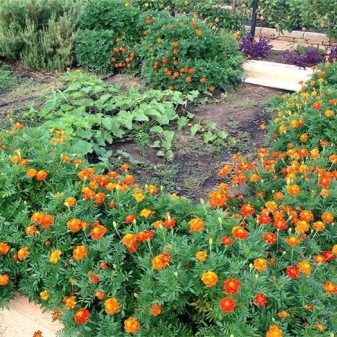
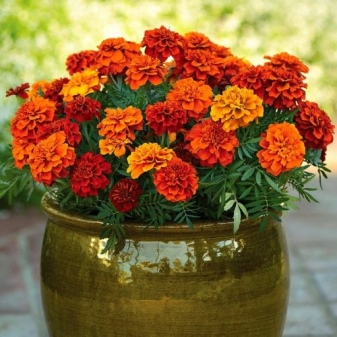
Despite their unpretentiousness, marigolds will develop well only with sufficient lighting, in addition, crops require warmth.
Watering
Young rejected marigolds will require special attention from the gardener regarding hydration. At first, plants will need regular and abundant watering to build up green mass. Also, the moisture level will play an important role when setting the buds. By mid-summer, the frequency and abundance of watering can be reduced, since flowering crops will cope better with drought than with waterlogging, which can provoke root rot.
Young marigolds are watered daily in spring and until mid-summer; after the introduction of moisture, it is recommended to loosen the ground in order to establish aeration. In addition to watering, caring for marigolds requires the removal of faded buds and dry foliage. To stimulate growth and increase the decorativeness of the flower bed, you can trim the plants. Such work is usually carried out in the summer.
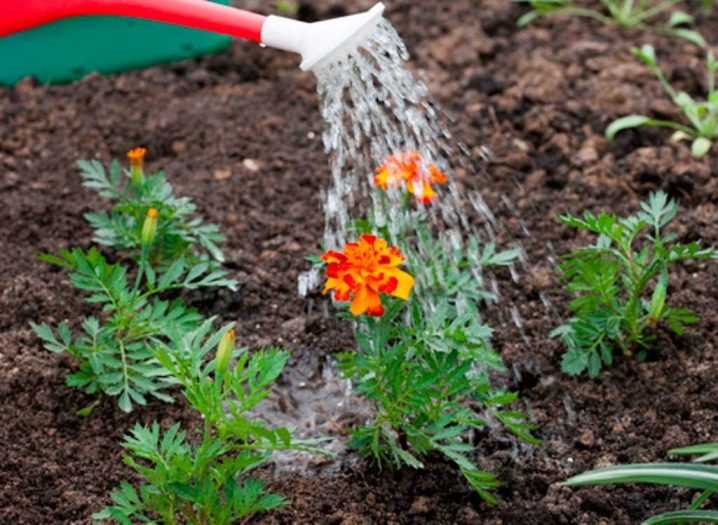
Growing rejected tagetes
Planting rejected marigolds is done in two ways:
- sowing in open ground;
- growing seedlings with subsequent transplantation.
Both methods allow you to decorate your site with bright colors, but in the first case, they will have to wait until mid-summer.
Landing in open ground
Marigolds rejected terry varieties are planted in open ground not earlier than May. By this time, frosts that are dangerous for sprouts have left. Seeds are evenly spread along grooves up to 5 cm deep, watered abundantly. Seedlings will appear in 7-10 days.
Flower propagation by seeds
Tagetes seedlings start growing in March or April. French marigolds bloom early, 40 days after sprouting. Seedling substrate consists of several components:
- peat;
- humus;
- sand;
- turf.
The result is a loose and light soil in which seeds germinate quickly. The container must have holes to drain excess water. At the bottom of the container, a drainage layer of fine gravel or expanded clay must be poured. For disinfection, the soil is spilled with a solution of fungicide or potassium permanganate. At a distance of 2 cm from each other, several grooves are made up to 1.5 cm deep.The seed is distributed along the groove and covered with soil
Watering is done carefully so as not to wash out crops. The top of the container is covered with foil
The optimum temperature for germination is 22-25 °. In such conditions, seedlings are shown in 3-4 days. After 14 days, the seedlings dive. In early June, they are planted in a permanent place. Depending on the height of the plants, a distance of 15-25 cm is left between the seedlings. Watering is required. Periodically, the soil is loosened, weeds are weeded. The timely removal of wilted inflorescences will help to prolong flowering and maintain a decorative appearance.

